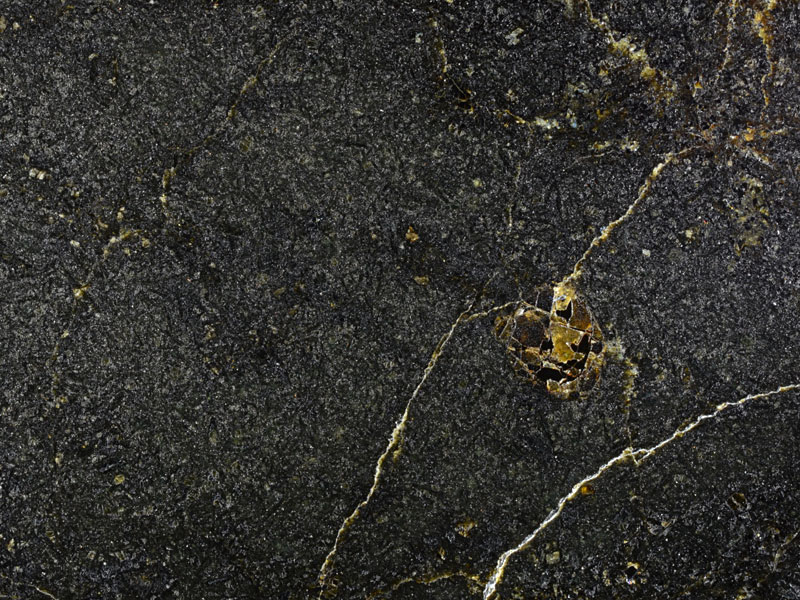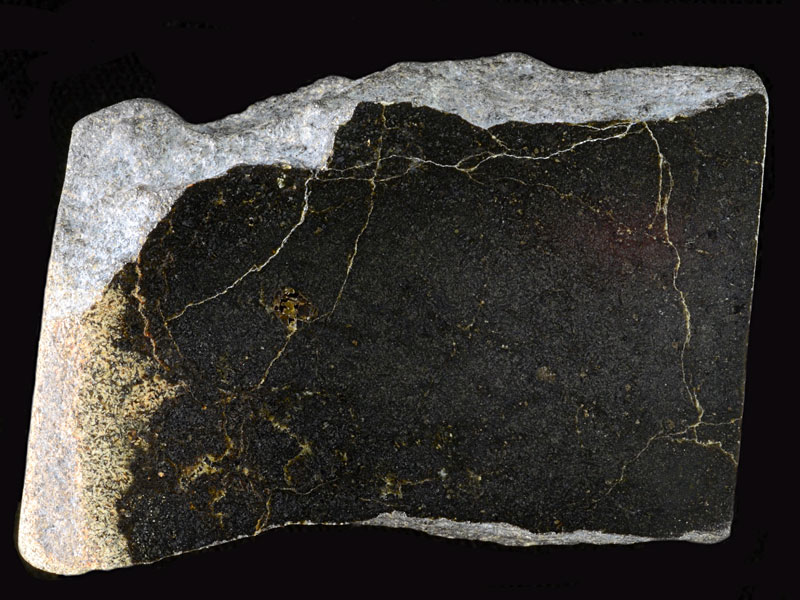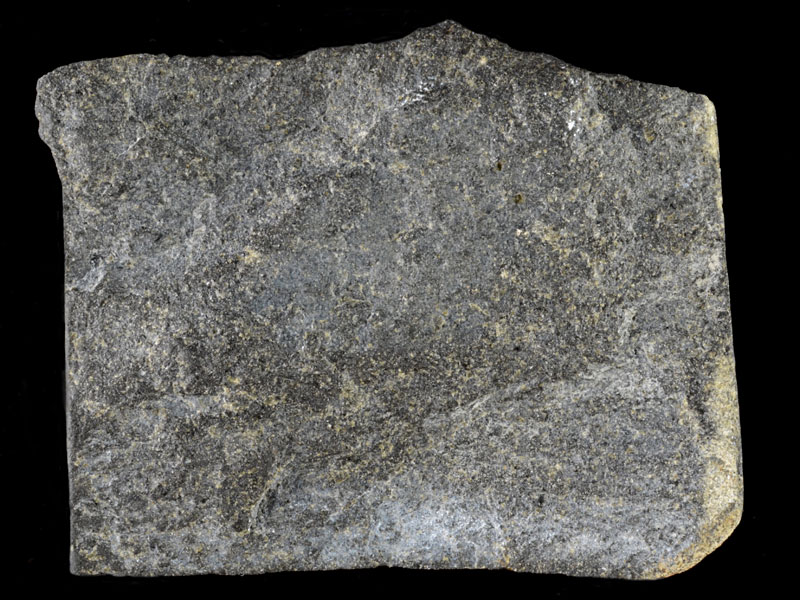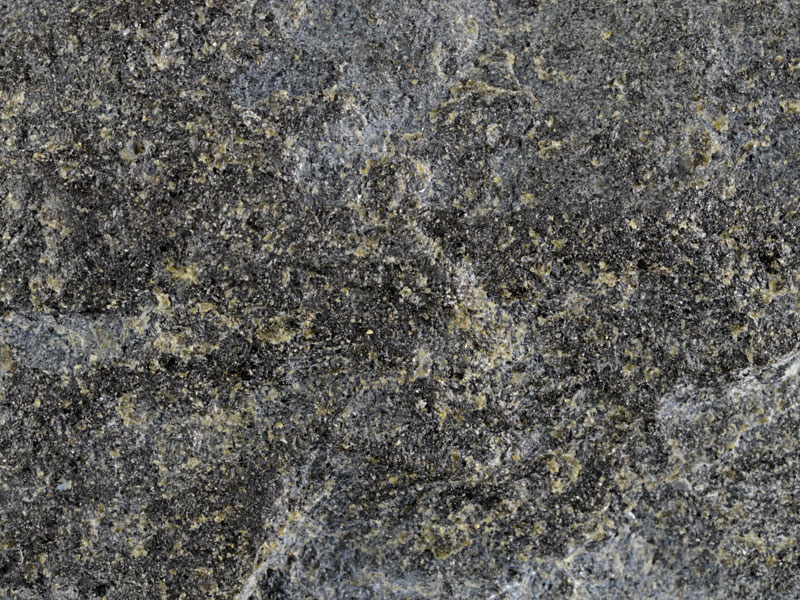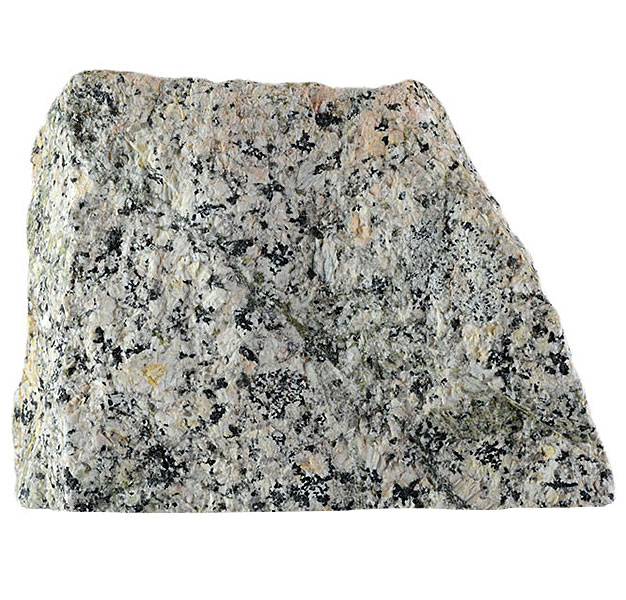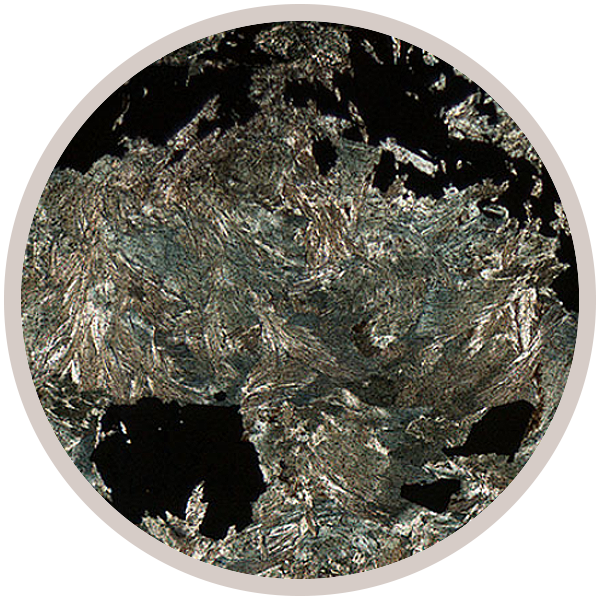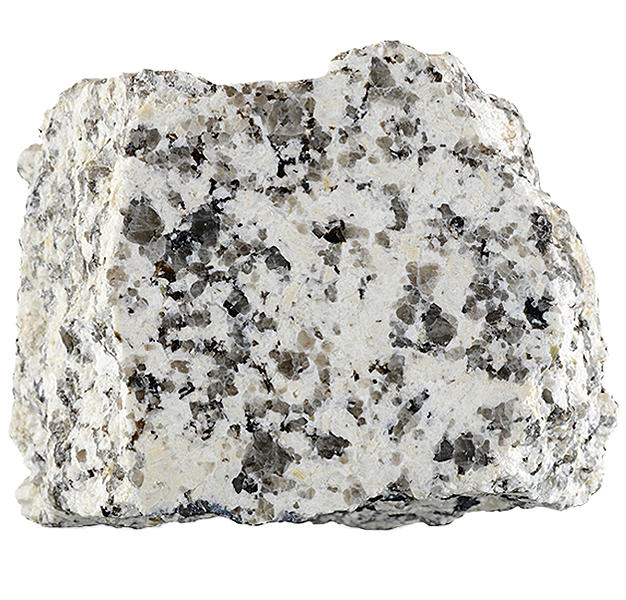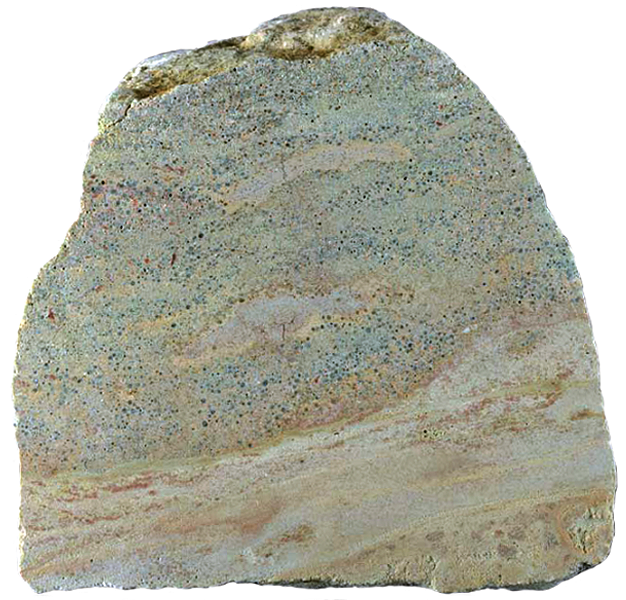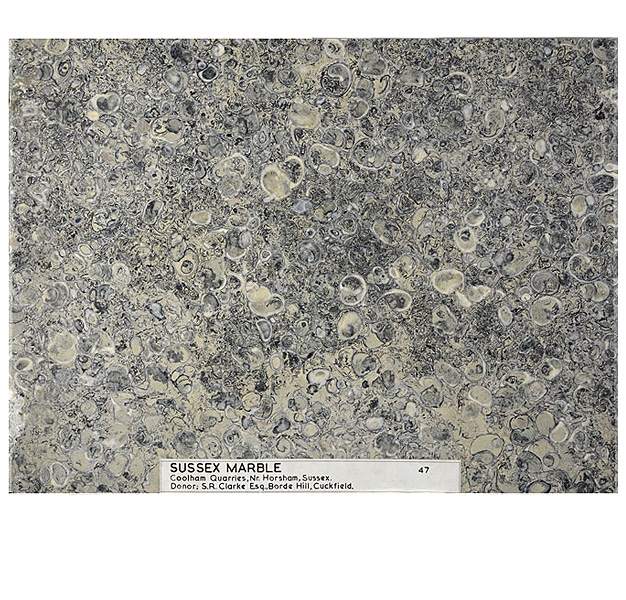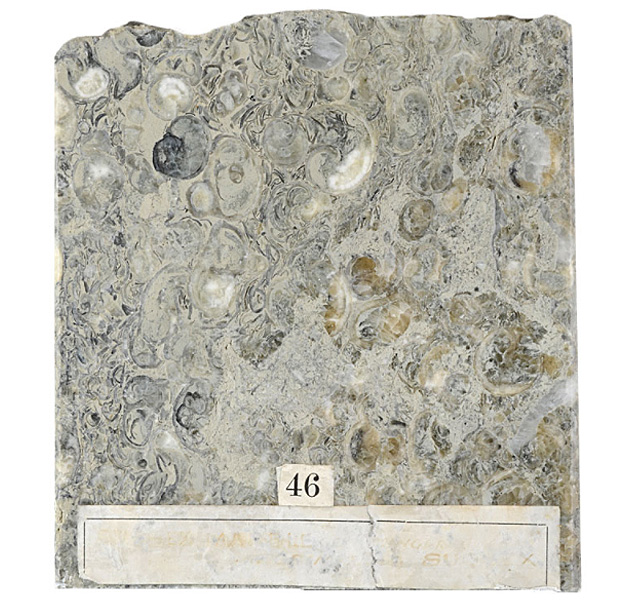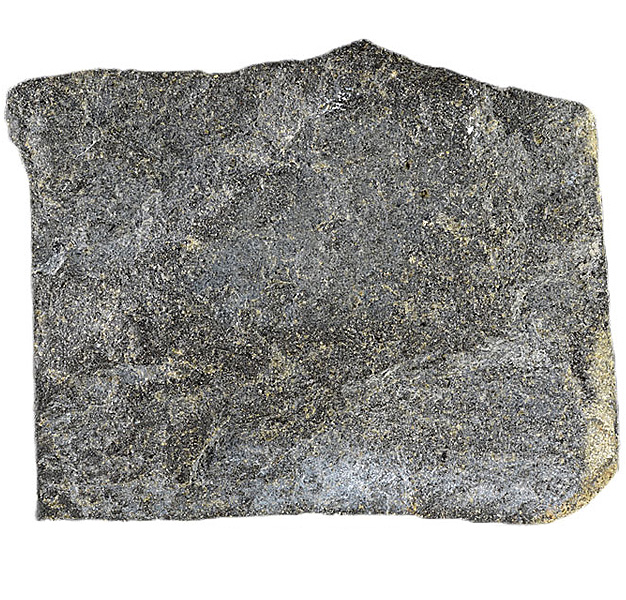
Fact sheet
This sample of hawaiite lava comes from the Orval Member of the Canna Lava Formation. The Orval Member is the uppermost series of this incomplete sequence of Palaeocene lavas which record the last major eruptive events on the Isle of Rum. The lavas and associated sediments are outliers, interpreted as having accumulated in a succession of hills and evolving valleys, post-dating the Western Granophyre and thus the central complex on Rum. These lavas are one of the best examples of the rapid erosion and exposure of volcanic plugs in the North Atlantic Igneous Province. The Orval Member includes olivine- and feldspar-phyric hawaiites and basaltic hawaiites.
The thin section exhibits relatively equal sized olivine and pyroxene grains some cldeavage evident in the pinkish-grey pyroxenes. Opaque minerals are common, and randomly oriented plagioclase laths and altered glass complete the section.
The United Kingdom Virtual Microscope (UKVM) collection consists of igneous, sedimentary and metamorphic rocks from around the UK.
It is intended as a teaching resource, helping to tell the story of the common rock types and how they form, and reflecting the history of the UK at the margins of the continent of Europe. The collection is a series of teaching sets, for example igneous rocks from the North Atlantic Igneous Province and SW England; high-temperature metamorphic rocks from Scotland and low-temperature metamorphic rocks from Wales; and sedimentary rocks, including English limestones and sandstones.
